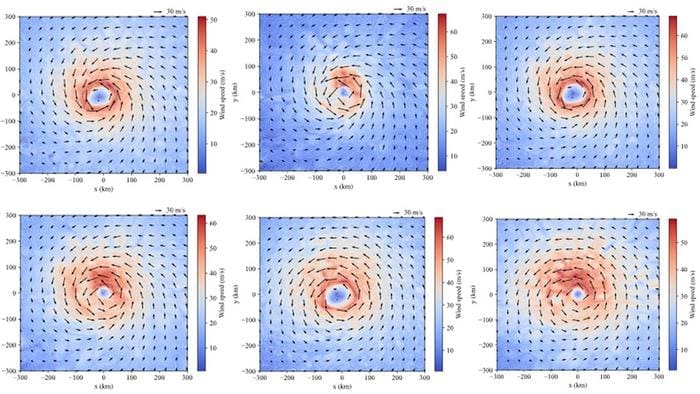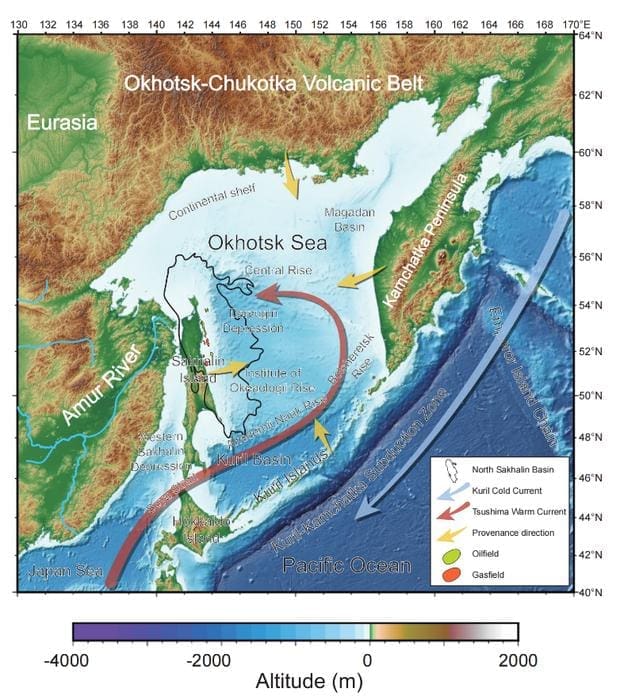Machine learning boosts hurricane prediction with better wind models
Researchers from the City University of Hong Kong have developed a machine learning algorithm to model the boundary layer wind fields of tropical cyclones more effectively.
Published in Physics of Fluids, the study addresses the challenges in predicting hurricane impacts by reconstructing wind fields using a physics-informed approach that requires less observational data than traditional models.

The boundary layer, closest to the Earth’s surface, is a critical area for understanding storms. According to researcher Qiusheng Li: “Understanding and accurately modeling (n.e. the boundary layer) is essential for storm forecasting and hazard preparedness.” Traditional numerical models rely on vast datasets and supercomputers but often fail to deliver precise predictions.
The new algorithm integrates atmospheric physics equations, enabling it to capture wind field behaviors with minimal data.
Researcher Feng Hu explained: “Only a small amount of real data is required by our model to capture the complex behavior of the wind field of tropical cyclones.” The method can reconstruct wind fields, providing key information on storm intensity, structure, and potential impacts.
With more intense hurricanes linked to climate change, this innovation could enhance storm preparation and forecasting. The team plans to expand the model to analyze various storm types globally and incorporate real-time data.
Journal Reference:
Feng Hu, Qiusheng Li, ‘Reconstruction of tropical cyclone boundary layer wind field using physics-informed machine learning’, Physics of Fluids 36, 11 (2024). DOI: 10.1063/5.0234728
Article Source: American Institute of Physics
Changing climate undermines herbicide effectiveness
A study led by the USDA Agricultural Research Service and the University of Illinois Urbana-Champaign reveals that weather variability reduces the effectiveness of post-emergence (POST) herbicides against agricultural weeds.
The research, based on 30 years of data from the U.S. Corn Belt, was published in Weed Science.

The findings show that weather conditions, including temperature extremes and precipitation patterns, affect the performance of herbicides like fomesafen, glyphosate, and mesotrione against common weeds such as waterhemp and giant foxtail.
Chris Landau, the study’s first author, noted: “Weather doesn’t just matter in the hours after POST application, as other studies have shown. Our analysis showed air temperature and precipitation were linked with herbicide effectiveness days before and after application for the products and weeds we studied.”
Both high and low temperatures reduce herbicide efficacy. Excessive heat accelerates weed growth and metabolism, while cold slows herbicide absorption and transport. Rainfall patterns also play a role, with drought conditions toughening weed cuticles and heavy rain washing away herbicides.
“If it’s excessively warm before application – and water is not limiting – weed growth speeds up, resulting in larger plants that may have a better chance of surviving the herbicide,” said co-author Marty Williams, an ecologist with USDA-ARS and affiliate professor in the Department of Crop Sciences, part of the College of Agricultural, Consumer and Environmental Sciences at Illinois. “Likewise, a hot period after application could supercharge plant metabolism and neutralize the herbicide faster, rendering it less effective.”
With climate change exacerbating weather extremes, researchers stress the need for farmers to adopt integrated strategies, including combining soil-applied residual herbicides with non-chemical tactics.
“Collectively,, weeds are adapting quicker than our ways to manage them. Climate change appears poised to put this evolution on a faster track,” warned Williams. “We hope it’s possible to get ahead of the issue of failing weed control on the research and development side, because the cost of waiting until everything fails could be painful.”
Journal Reference:
Landau C, Bradley K, Burns E et al. ‘Searching for consistent postemergence weed control in progressively inconsistent weather’, Weed Science pp. 1-22 (2024). DOI: 10.1017/wsc.2024.80
Article Source: University of Illinois | College of Agricultural, Consumer and Environmental Sciences
New insights into hydrocarbon formation in the North Sea Basin
A multidisciplinary team led by Dr. Rixiang Zhu from the Institute of Geology and Geophysics, Chinese Academy of Sciences (CAS), has unveiled a detailed analysis of hydrocarbon formation and accumulation in the North Sea Basin.
Their study, published in Science China Earth Sciences, highlights how tectonics, sedimentation, and climate interactions have shaped oil and gas resources in this region.

The basin’s structure results from complex geological processes, including crustal extension, mantle plume uplift, and thermal subsidence. These events led to the creation of distinct oil-rich strata in the north and gas-rich systems in the south.
The basin’s drift through mid-latitude atmospheric cells influenced its resource distribution, with marine shales and coal measures serving as key source rocks.
The study also underscores the basin’s relevance as a model for hydrocarbon exploration in similar regions, such as the Okhotsk Sea Basin. Advanced tools like artificial intelligence are proposed to enhance resource exploration and align with carbon-neutral goals.
Journal Reference:
Zhu R, Zhang S, Wang H et al. ‘Multi-spheric interactions driven differential formation and accumulation of hydrocarbon resources in the North Sea Basin’, Science China Earth Sciences 67 (11) 3397–3420 (2024). DOI: 10.1007/s11430-024-1421-8.
Article Source: Science China Press
Featured image credit: Gerd Altmann | Pixabay




